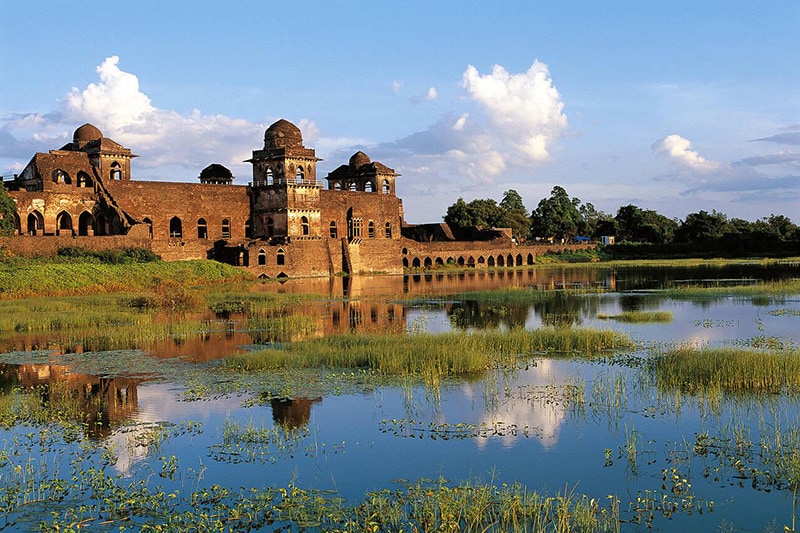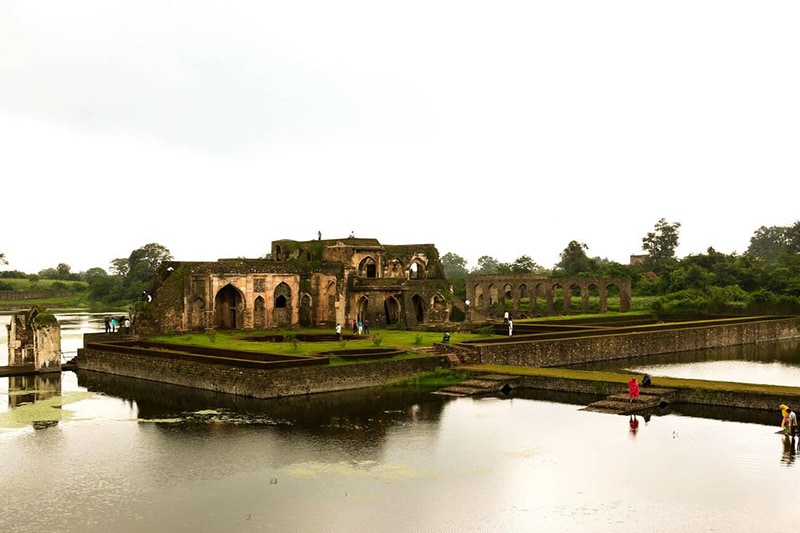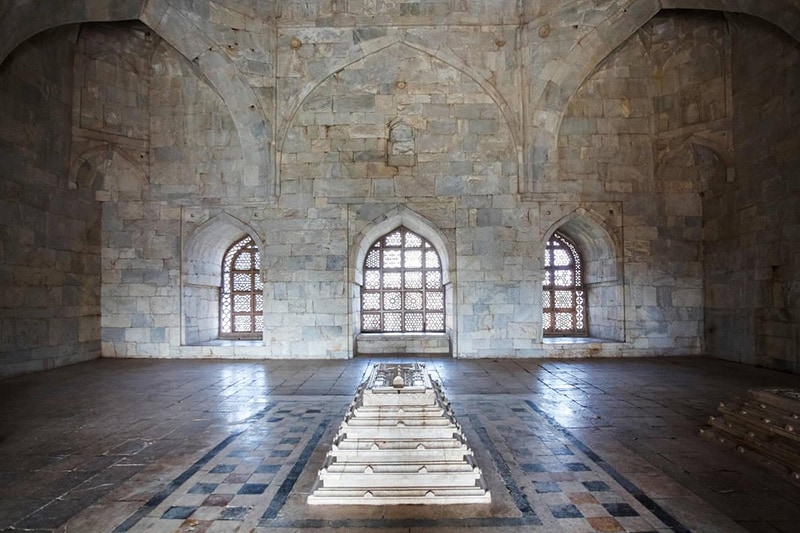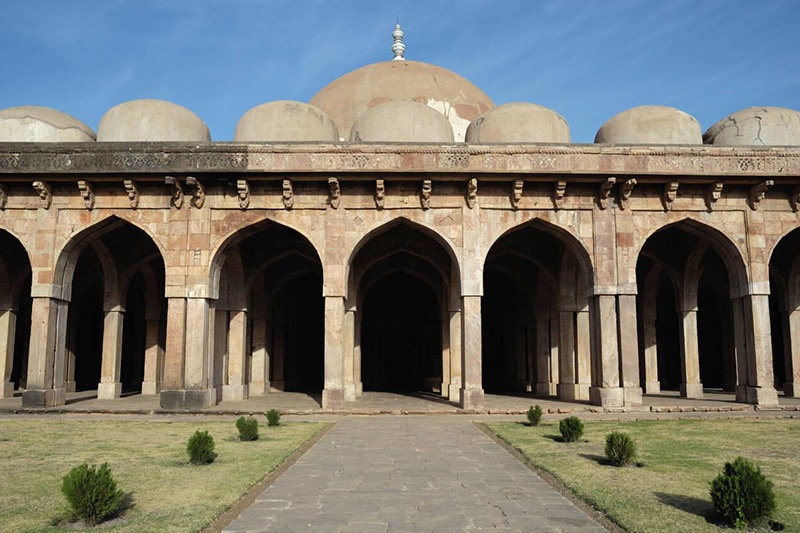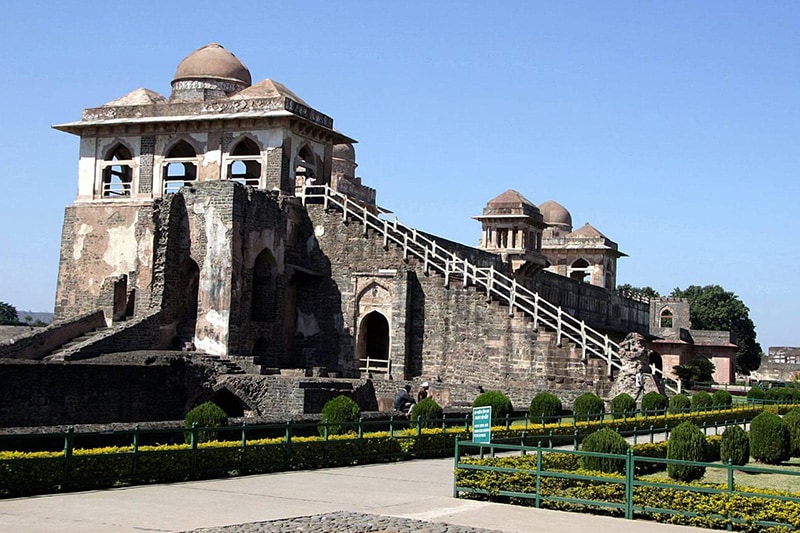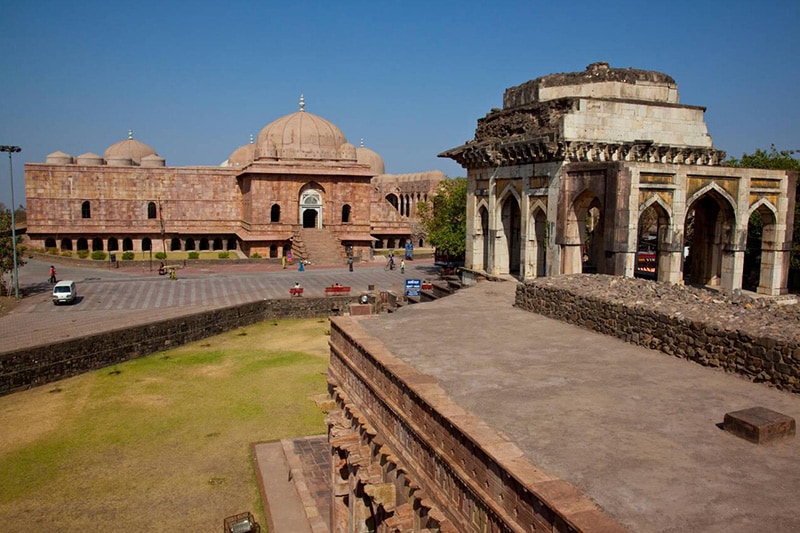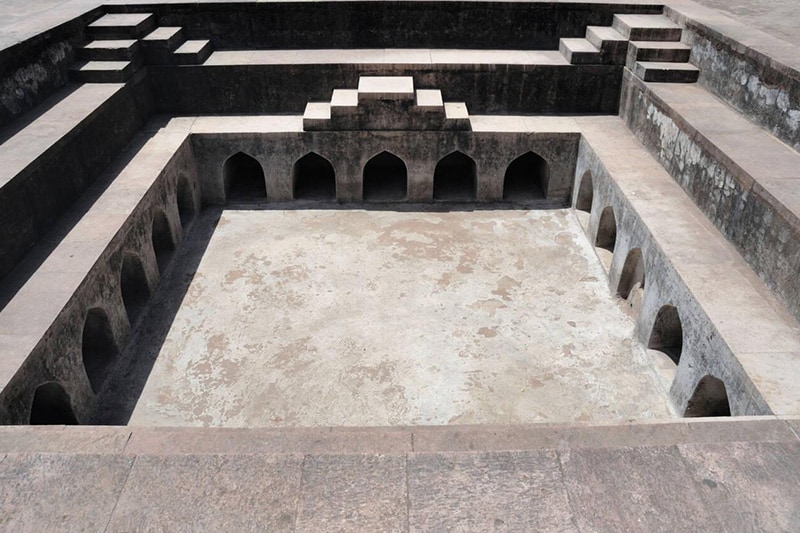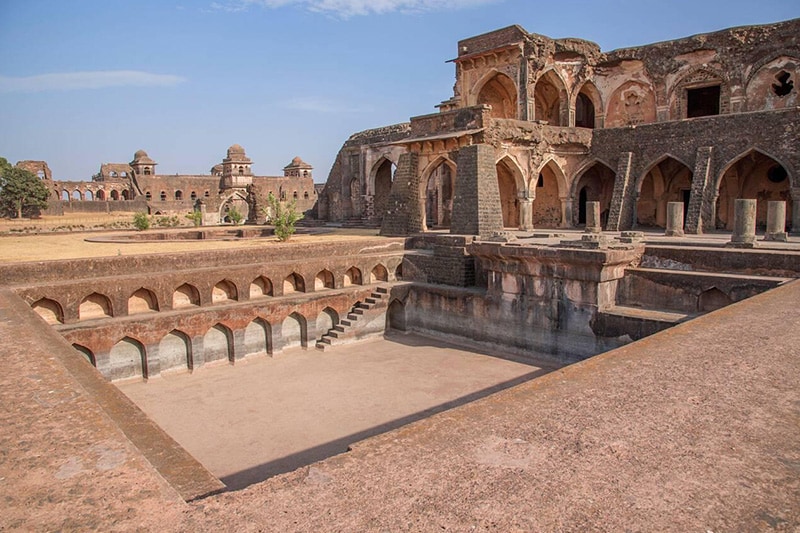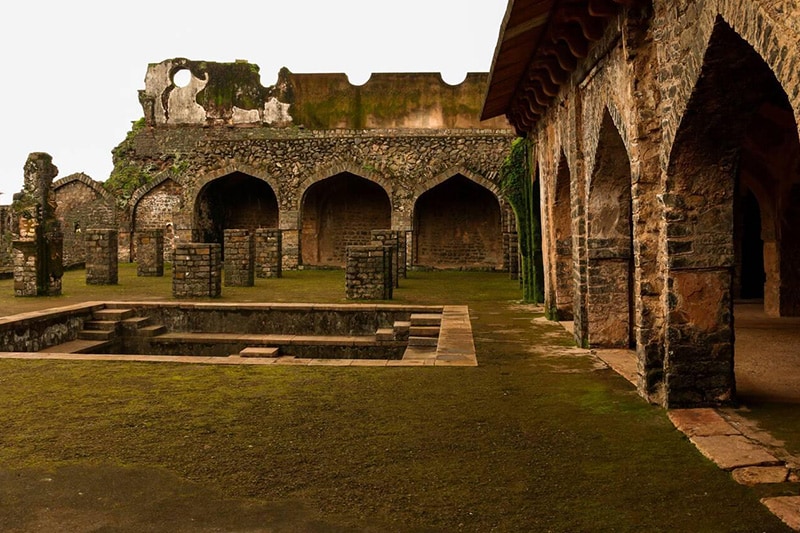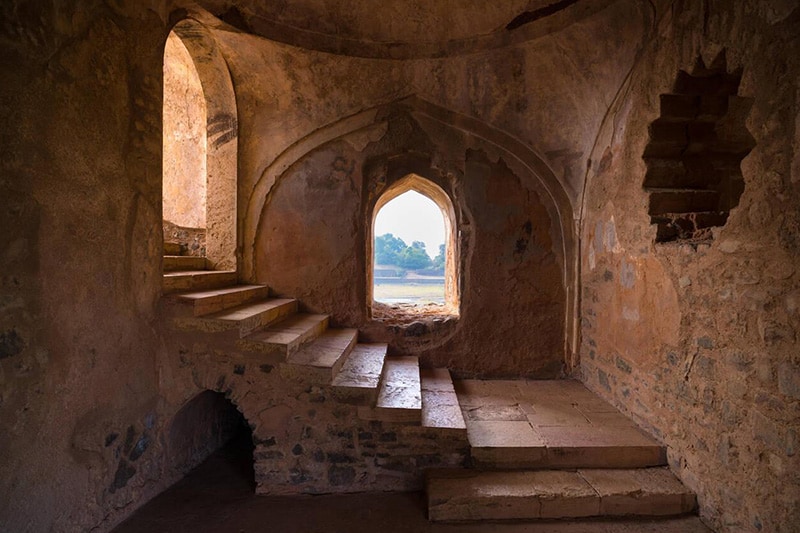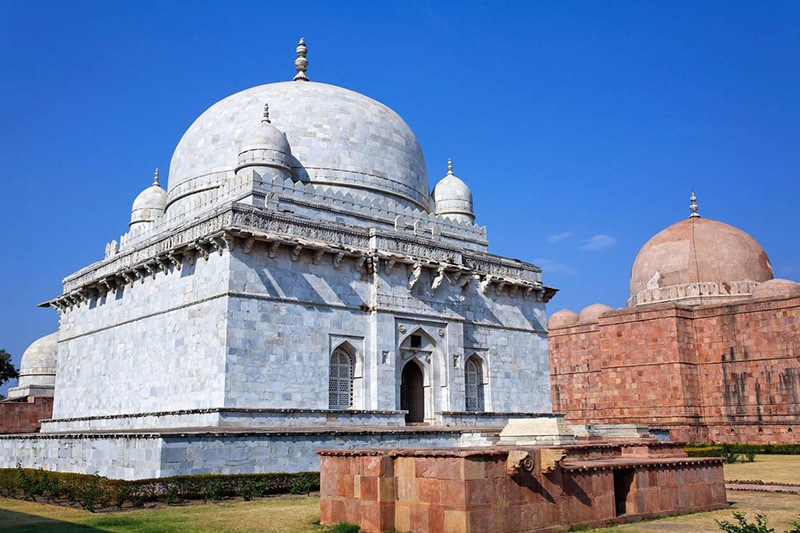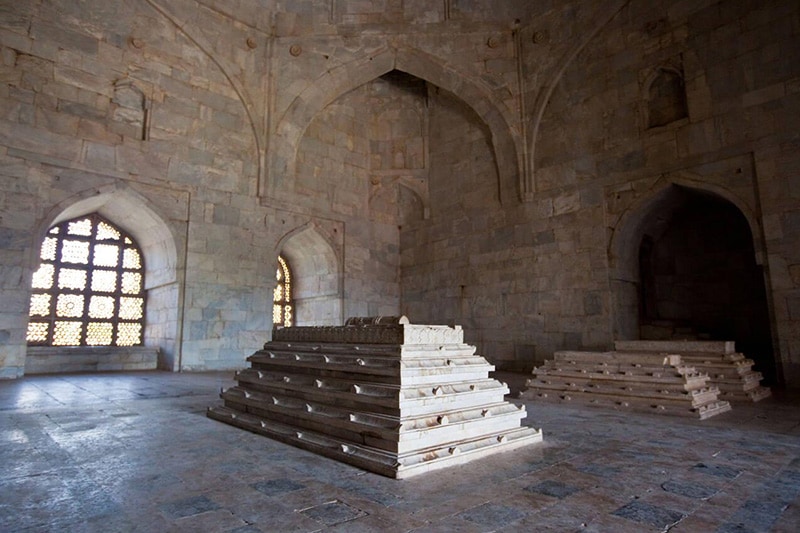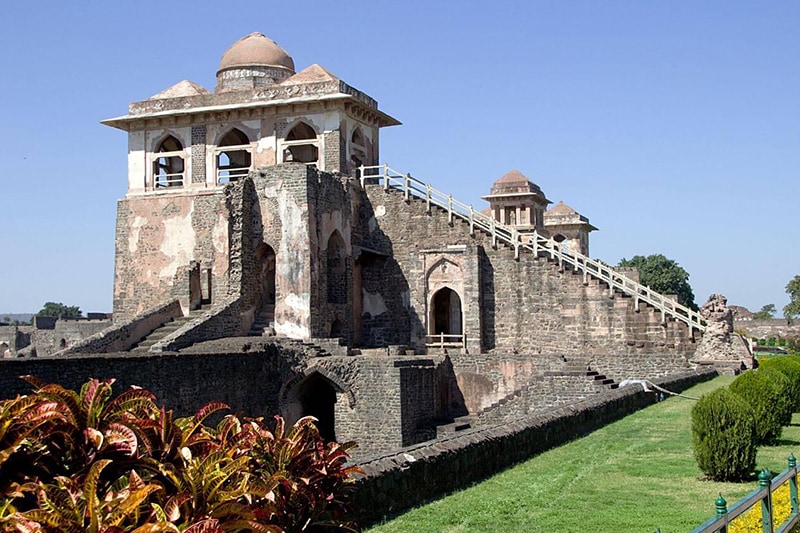
Mandu
Mandu, situated in the state of Madhya Pradesh, is an incredibly beautiful tourist destination. Travelers come from far and wide to visit this place. Mandu is located on the Vindhya Range of hills, at an elevation of around 2,000 feet. It was once known as Shadiabad in a bygone era. Here, you can witness ruins, cliffs, and hills.
Tourists can visit the Neelkanth Shiva Temple and explore Neelkanth Mahal. Neelkanth Mahal was constructed by Shah Badgah Khan for Akbar’s Hindu wife and features intricate artwork on its walls. You can also explore the Hathi Mahal, Daria Khan’s Tomb, Dai Ka Mahal, the Jahaz Mahal, and Eco Point.
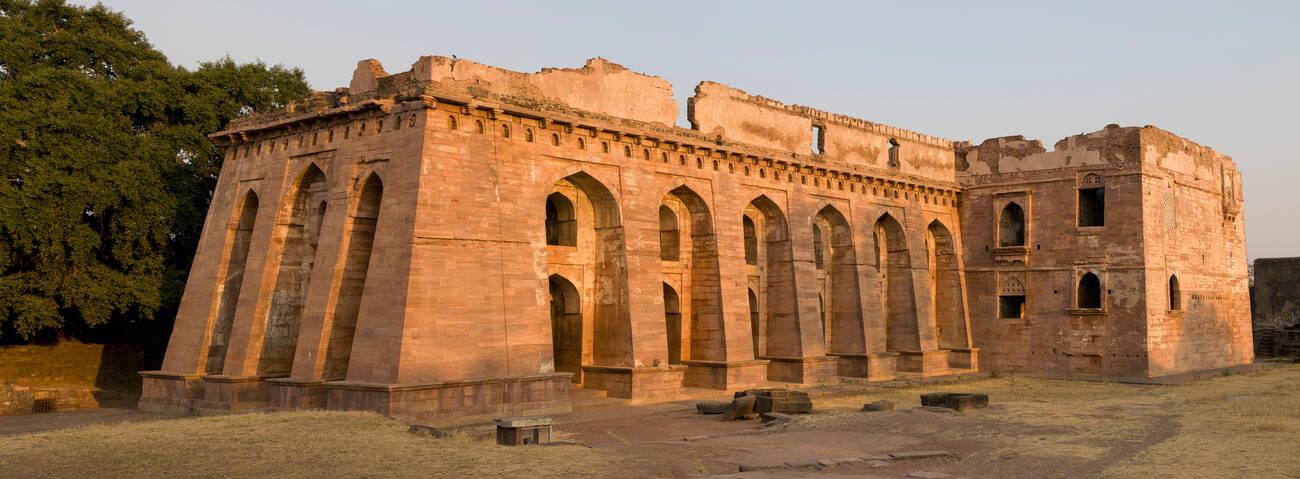
This place is a witness to the immortal love story of Rani Roopmati and Baaz Bahadur. It is also known as the Village of Ruins. Its alternate name is Mandavgad. Mandu has around 12 entry gates, with the Delhi Darwaza being the main one. This is known as the entrance gate of Mandu and was constructed between 1405 and 1407 AD. You can tour several tourist spots here, including Rani Roopmati’s Mahal, Hindola Mahal, Jahaz Mahal, Jama Masjid, and Ashrafi Mahal. During the time of the sultans, Mandu was referred to as Shadiabad, which means the “City of Joy.” Mandu has been ruled by various dynasties, including the Paramara dynasty, the Sultanate period, the Mughal era, and the Pawar dynasty.
Mandu, originally established as a fortified city by Raja Bhoja of the Parmar dynasty, underwent a fascinating transformation in its history. In 1304 AD, it fell under the rule of Muslim rulers from Delhi. Notably, the Afghan noble Dilawar Khan served as the governor of Malwa, and he eventually carved out his own kingdom within Mandu.
The legacy continued with Dilawar Khan’s son, Hoshang Shah, who made a pivotal move by relocating the capital from Dhar to Mandu. Under his reign, Mandu reached the pinnacle of its grandeur, witnessing an era of remarkable cultural and architectural developments.
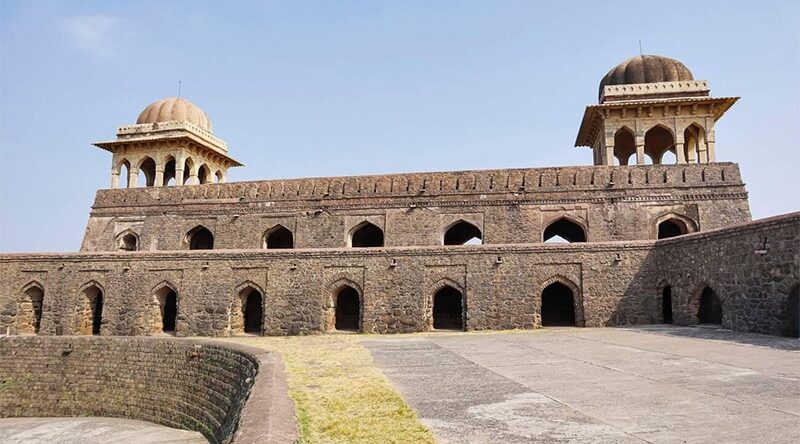
- Jahaz Mahal / Ship Palace
- Hindola Mahal
- Rani Roopmati Pavilion
- Baz Bahadur Palace
- Jami Masjid
- Hoshang Shah Tomb
- Ashrafi Mahal
- Mandavgarh Suparshvnath Swetamber Jain Mandir
- Nilkanth Mahadev Mandir & Nilkanth Palace
- Kakda Kho Waterfall
- Chappan Mahal Museum
- Champa Baoli & Hammam Ghar
- Nahar Jharokha
- Dilawar Khan Mosque
- Taveli Mahal
- Rewa Kund
- Dariya Khan Tomb
- Hathi Mahal
- Sagar Talao Group Of Monuments
- Lohani Caves
- Bagh Caves
Mandu is well-connected to major cities in Madhya Pradesh by road and is located near Indore. You can reach Mandu by:
By Air:
The nearest airport is in Indore, which is about 99 kilometers away from Mandu. Indore has regular flights connecting it to Delhi, Mumbai, Gwalior, and Bhopal.
By Train:
The closest railway station on the Delhi-Mumbai mainline is Ratlam, which is about 124 kilometers away. Ratlam is a major railway station, and most trains stop there.
By Road:
Mandu is well-connected by a good road network to other cities. Regular bus services connect Mandu to Dhar (35 kilometers), Indore, Ratlam, Ujjain (154 kilometers), and Bhopal (285 kilometers via Indore).
So, whether you prefer to travel by air, train, or road, Mandu is accessible from various parts of Madhya Pradesh and nearby cities. Enjoy your trip!

